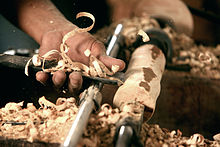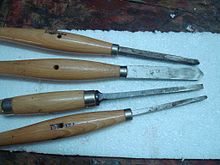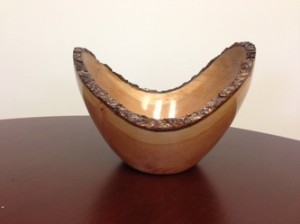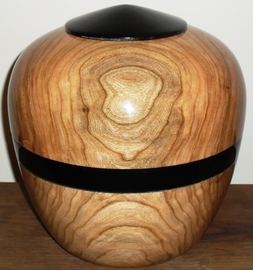 Woodturning is a form of woodworking that is used to create wooden objects on a lathe. Woodturning differs from most other forms of woodworking in that the wood is moving while a stationary tool is used to cut and shape it. Many intricate shapes and designs can be made by turning wood.
Woodturning is a form of woodworking that is used to create wooden objects on a lathe. Woodturning differs from most other forms of woodworking in that the wood is moving while a stationary tool is used to cut and shape it. Many intricate shapes and designs can be made by turning wood.
Wood turning is an art that dates back to 1300 BC when the Egyptians developed a two person primitive type lathe. Thanks to electricity and modern technology the craft and tools used have evolved.
The process first begins with obtaining wood. At Appalachia Urns, we never cut down trees to use for our vessels, but rather re-purpose a tree after it has come down in a storm or perhaps given to us by someone who’s had to do some excavating. Wood for turning can also be purchased if one does not reside in an area where hardwoods are abundant. In addition if one wanted to craft items out of exotic woods such cocobolo, purple heart wood and the like, those woods would need to be purchased from wood dealers.
The next part of the process is cutting the wood into manageable sizes. Some turners will turn wood while it is green (not completely dry) and other will dry the wood fist. Sometimes wood is soaked in a wood stabilizer to help with the longevity of the product. Each artist/crafts-person of wood-turning often has their own preference.
The wood needs to be cut in a manner that the direction of the cut is suitable for the type of work the turners is doing, faceplate turning or spindle turning. If cut on the incorrect direction this can cause tear-out which results in a damaged looking surface texture and would greatly reduce the value of the product.
Once wood is placed on the turning lathe, various gouges, scrapers, shavers are used against the wood to create the shape and desired surface. Protective eye wear and respiratory equipment are recommended as the lathe is spitting out dust, wood chips and shavings. Sanding then finishing are the final steps. Some items can be left unfinished, others coated in a natural food-safe finish such as bees wax, while other preserved with a urethane finish.
This beautiful craft takes skill and artistic ability and can turn raw pieces of wood into amazing beautiful works of art.
|
|
|




